How to Design an eBook Even If You Have Zero Design Skills
.png)
.png)
If your ebook draft is sitting unfinished because the design part feels overwhelming, this guide is for you. We break down how to create a digital ebook that looks clean, reads well, and actually gets published, even if you’re not a designer.
As creative people, we often love making things and then putting them aside for later. Chances are, you also have a brilliant draft sitting somewhere, quietly collecting digital dust. Maybe you’ve written the content, maybe even edited it… But then came the design part, and everything stalled.
And, as it usually goes, the project slowly turned into a “someday” task.
There’s nothing wrong with postponing things. But what you’re actually postponing is potential. A well-designed ebook could be a powerful lead magnet, it could fuel your content strategy for months, or even become a sellable product.
If you’ve made it to this article, you’ve already passed the point of no return. We’re going to walk you through exactly how to design an ebook, which format to choose, which tools are beginner-friendly, and how to simplify the entire process.
Let’s finally get this done.
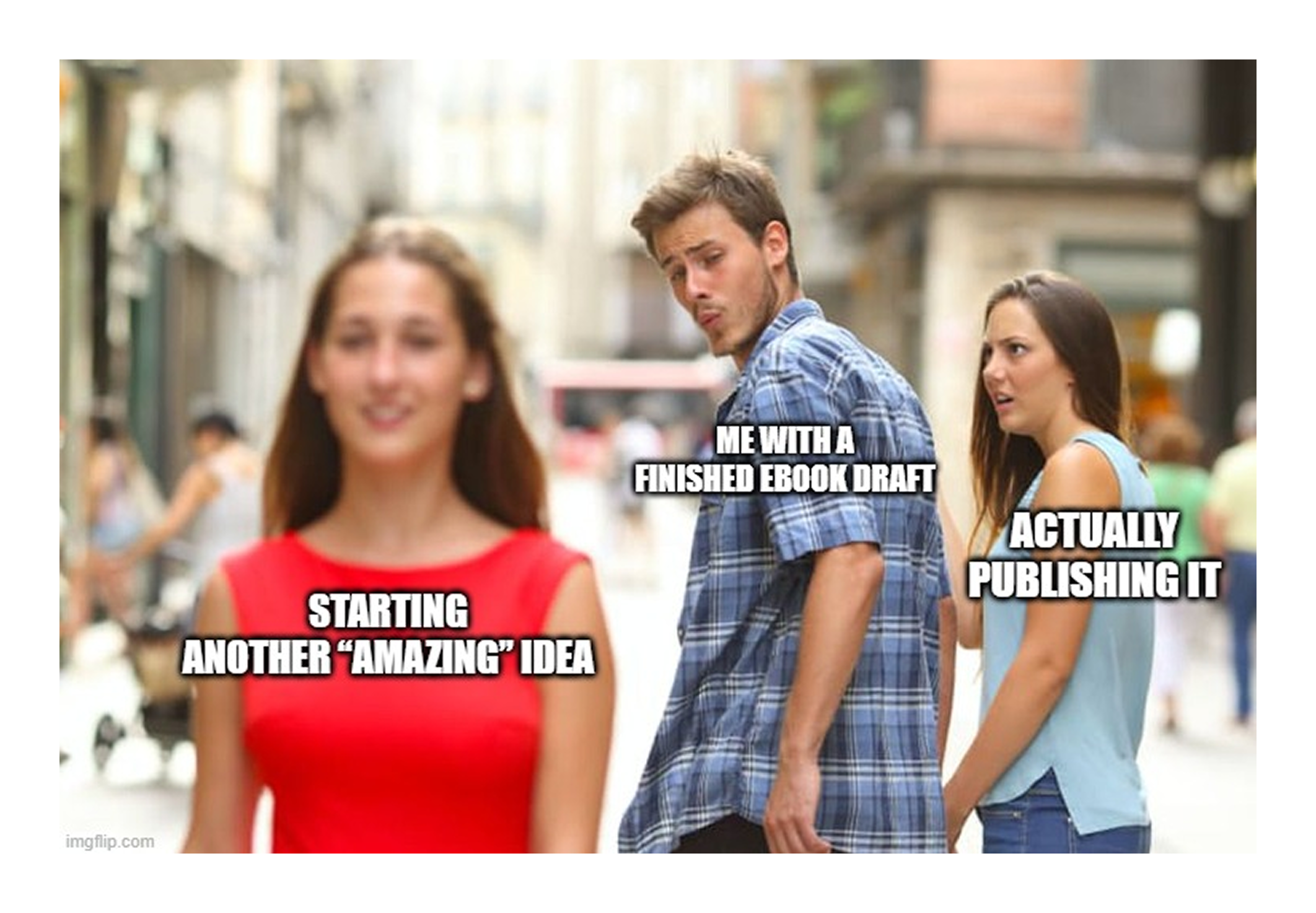
The main advice we want you to keep in mind is: ebook design doesn’t mean making something pretty for the sake of aesthetics. Your main task is to make the content work so that the target audience actually reads it, understands it, and takes action.
To do that right from the start, you’ll need to work with five core things:
If that sounds like a lot, don’t worry, we’ll break it down. Most business tools you’ll use (like Canva or even Google Docs) already come with templates that do 80% of the work. Your job is to make a few smart choices and keep things consistent.
But before anything else, the first step in our ebook guide is choosing the right format.
The right format for your own ebook will affect how your file behaves, where you can publish it, and how it looks on different devices. For most beginners, the choice comes down to three options: PDF, EPUB, or MOBI.
Here’s a brief breakdown on how they differ.
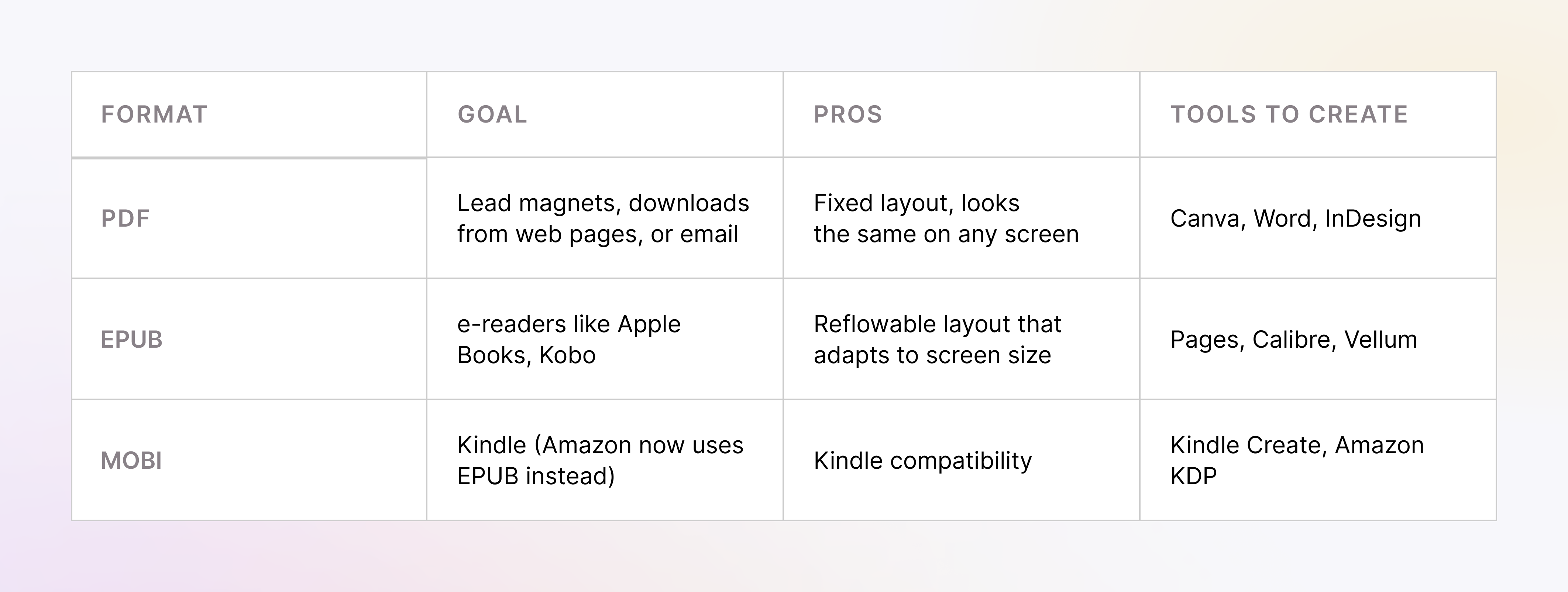
If you’re planning to offer your ebook as a free download through your website, email newsletter, or lead magnet campaign, a PDF file is usually the best choice. It’s easy to create, gives you full control over layout and visuals, and looks exactly the same no matter what device someone opens it on.
When your goal is to get listed on platforms like Apple Books or Kobo, or you want your ebook content to adapt nicely to different screen sizes, then EPUB is the better fit. Unlike PDFs, EPUB format is reflowable, meaning the text adjusts based on the reader’s device and settings, which makes for a smoother experience.
And once you’re targeting Kindle readers, you might come across MOBI as one of the available formats. These days, it’s deprecated, and Amazon recommends uploading an EPUB instead. Once you do, their system automatically converts it for Kindle devices, so you don’t need to worry about creating MOBI files manually.
Before jumping into design, take a moment to consider how to create an ebook that actually serves a purpose. Are you trying to generate leads? Are you selling a more in-depth digital product? Or are you looking to repurpose long-form content into something more polished? Once you’re clear on the direction, it becomes much easier to build every chapter, paragraph, and call to action around that.
With the goal set, outline your content. Break it into chapters or sections that follow a logical flow. If it’s educational, you might want to move from basic to advanced. If it’s more persuasive, think about the narrative arc: introduction, challenge, solution, proof. Each section should cover one idea. Even a rough outline with five to seven bullets is enough to give you direction.
From here, the process moves faster:
Write. Fill in your outline with content. Use short paragraphs, subheadings, and transitions to keep the reader moving.
Edit. Step back for a day or two before reviewing. Then, read it out loud, cut anything that feels like filler, and watch for overly complex paragraphs.
Design. Choose the page layout that feels just right and apply consistent spacing, font sizes, heading styles, and images.
Review. Export a draft and test it on different screen sizes. Check for broken lines, floating images, or weird page breaks.
Publish. Whether you’re uploading to your site, sending it in a newsletter, or sharing it with partners, your new ebook is ready to go.
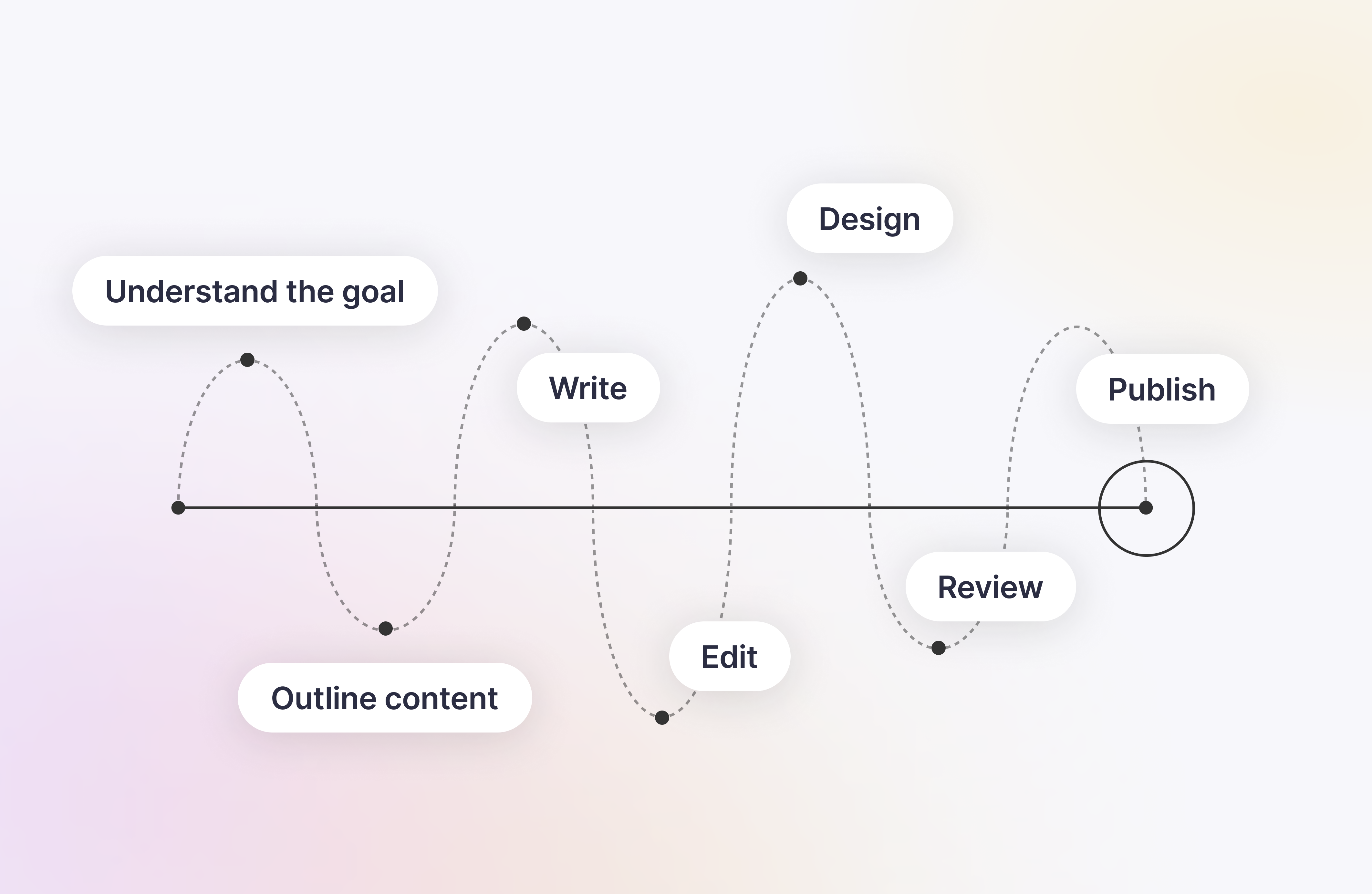
As you can see, you won’t create ebooks in one leap. And you’ll rarely find a how to make a digital book guide that says otherwise. What we’ve covered here is a quick overview of the process that’s just enough to get you moving. If you want a more detailed breakdown, check out our article How to Create an Ebook.
Once your content is written, reviewed, and structured, it’s time to make it look like something people actually want to read.
This is the part where many creators freeze, either because they feel like they “don’t have an eye for design,” or because the number of tools and options makes it hard to know where to start. The truth is, you don’t need the best software or a design degree to put together an ebook. You just need to choose one of the four methods below that fits your workflow and skill level.
If you want to design your ebook without hiring a designer or learning professional software, online tools are your best starting point. These platforms let you focus on your content and end up with something that looks great.
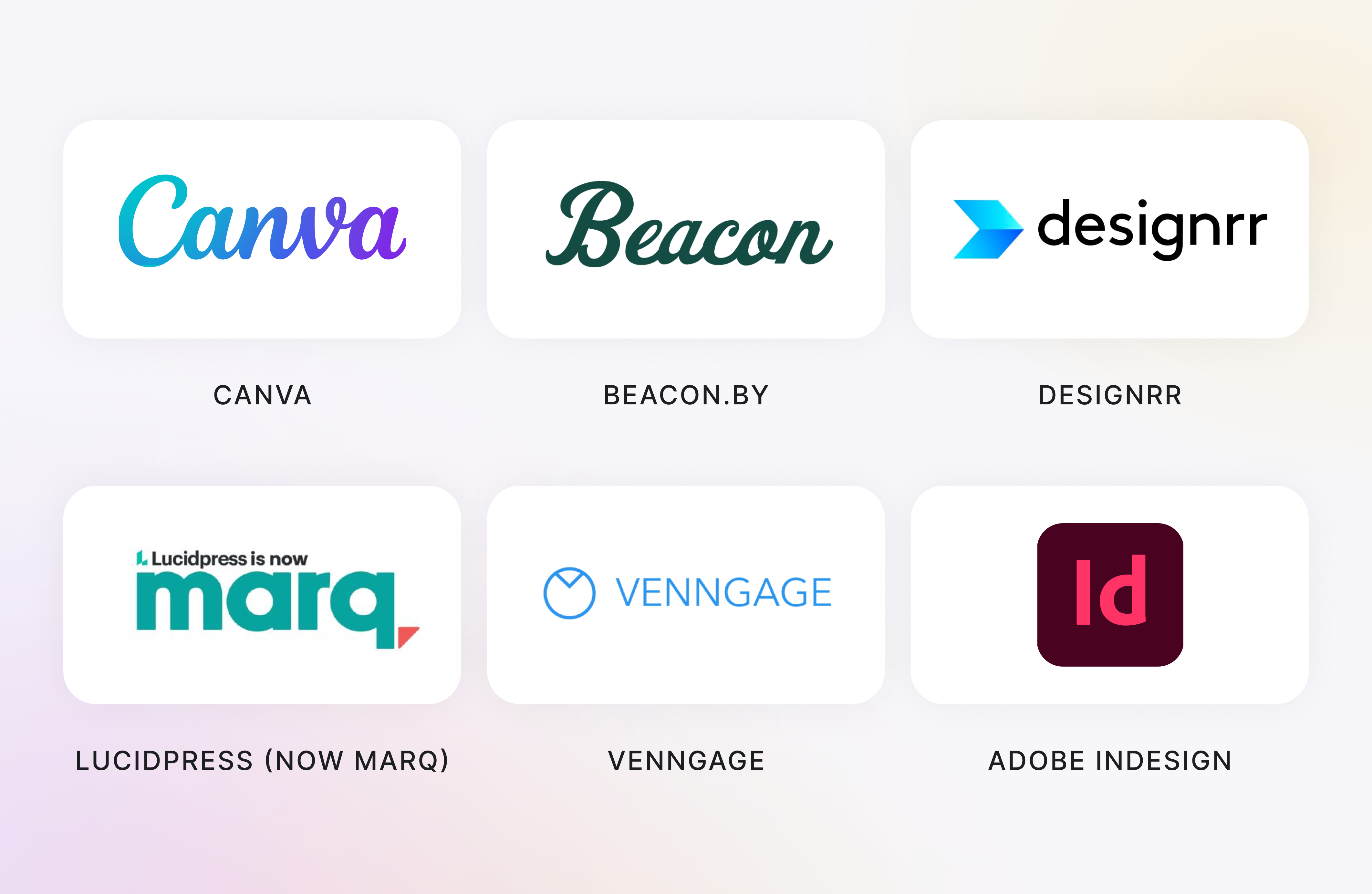
→ Canva
Canva is simple to use, works in your browser, and offers dozens of templates. You can drag in text, swap images, and tweak fonts and colors to match your brand. If you want to upload brand assets or collaborate with a team, a premium account adds those features, but you can get far without it in its free version.
✓ 2,500+ free ebook templates
✓ 4.5M stock photos and graphics
✓ AI creative partner for design, image, and text generation
✓ Resize and background removal features
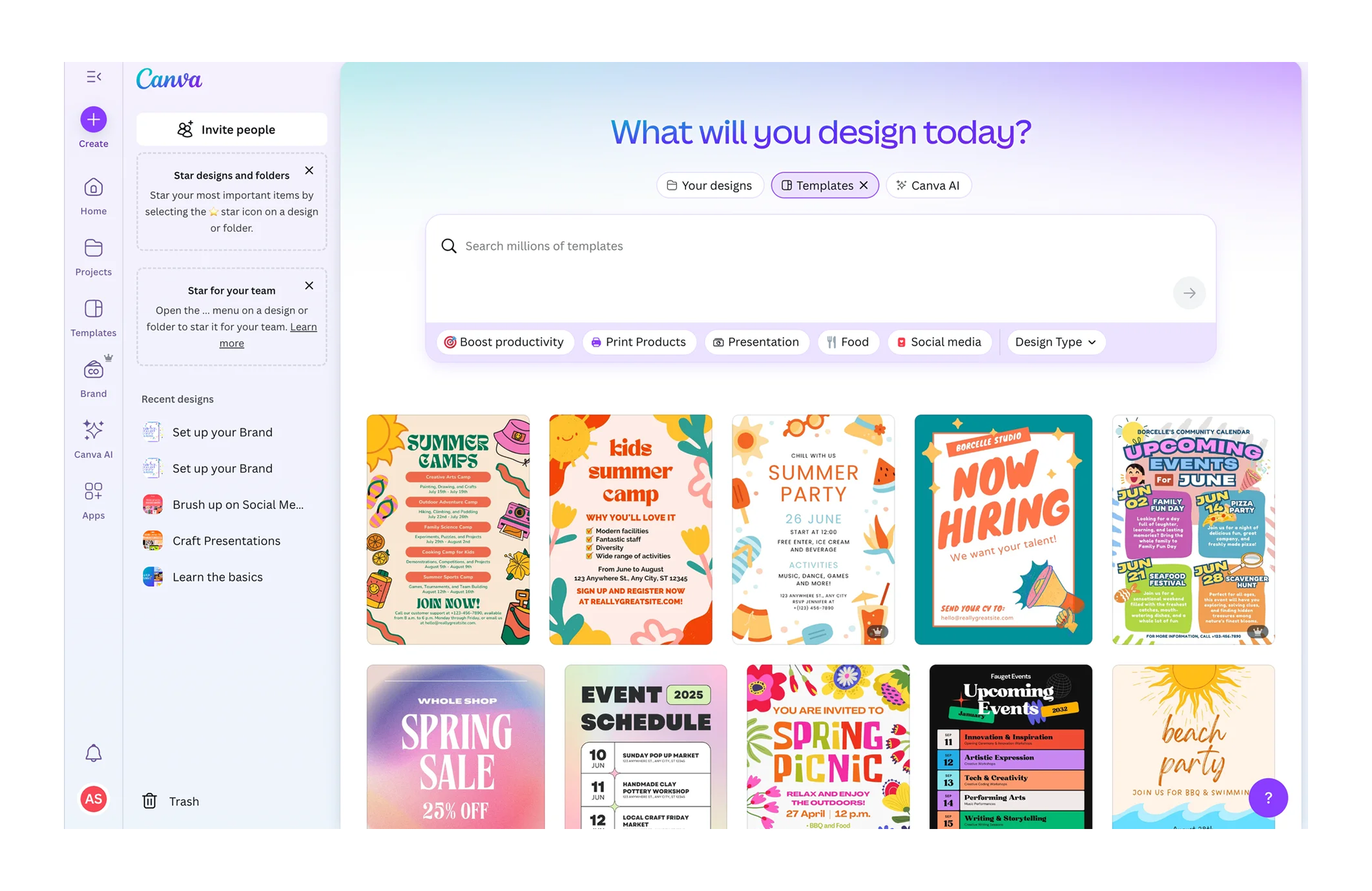
→ Beacon.by
Beacon.by is geared toward marketers and can import your blog content, apply a consistent layout, and generate extras like a table of contents, author bio, or call-to-action pages. It’s great if your ebook is a lead magnet and you want it to feel polished without spending hours on layout.
✓ Blog post recycle feature
✓ Auto-generated table of contents
✓ Your own image library
✓ Pre-made templates
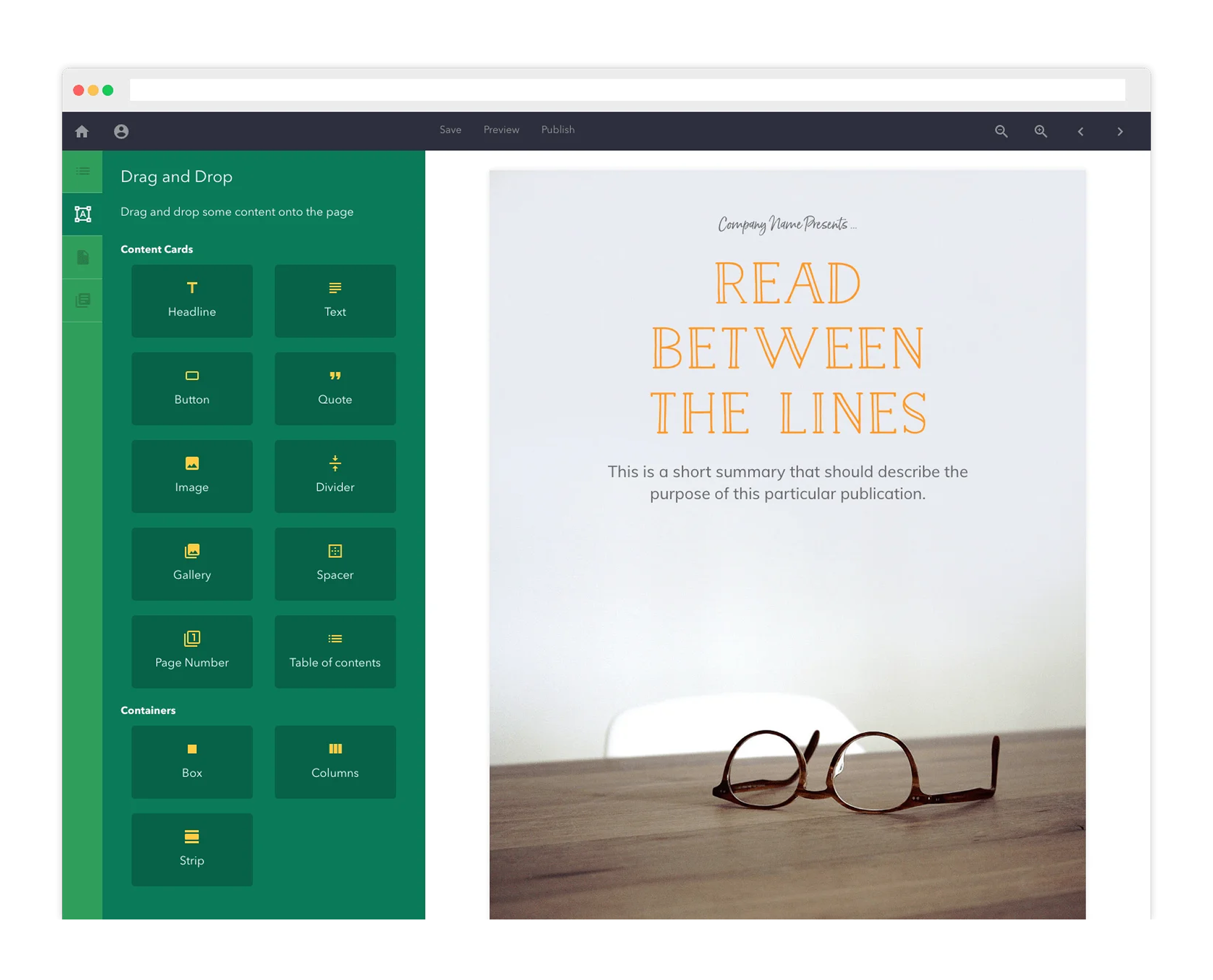
→ Designrr
Designrr does something similar, but leans harder into automation. You can paste in a blog post URL, Google Doc, or Word file, choose from a variety of ebook templates, and turn your content into a downloadable product. Plus, this tool supports multiple export formats, including PDF, EPUB, and Kindle.
✓ 100+ project templates
✓ Copyright-free image library
✓ Project draft editor
✓ Multiple export options
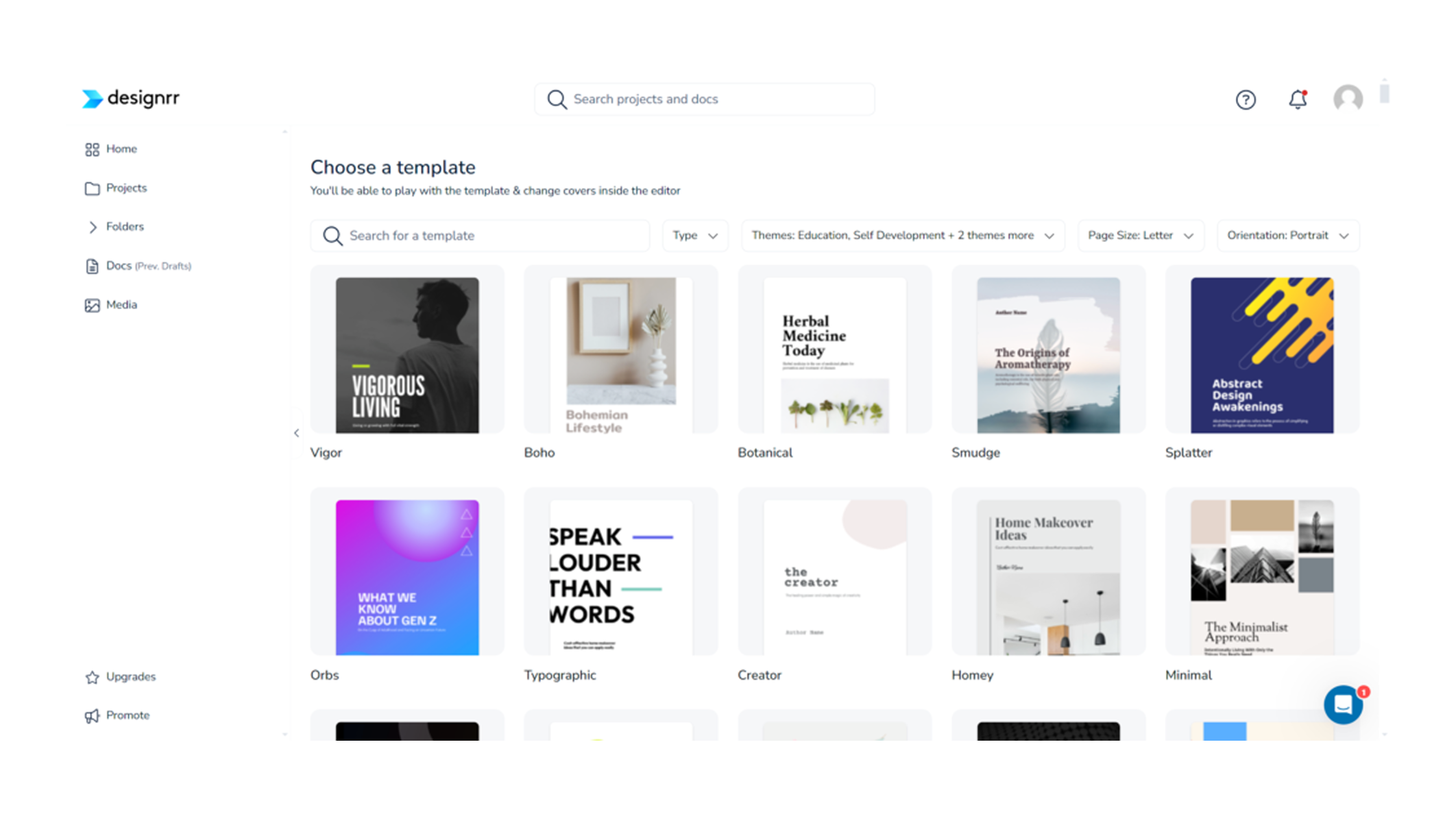
→ Lucidpress
Lucidpress (rebranded as Marq) is a web-based design platform with pre-built templates for brochures, reports, and ebooks. It’s particularly useful if you want to maintain visual consistency across different marketing materials. While it offers less content automation, it provides more design flexibility.
✓ 30 free ebook templates
✓ Content locking feature
✓ Built-in analytics
✓ One-click social media share
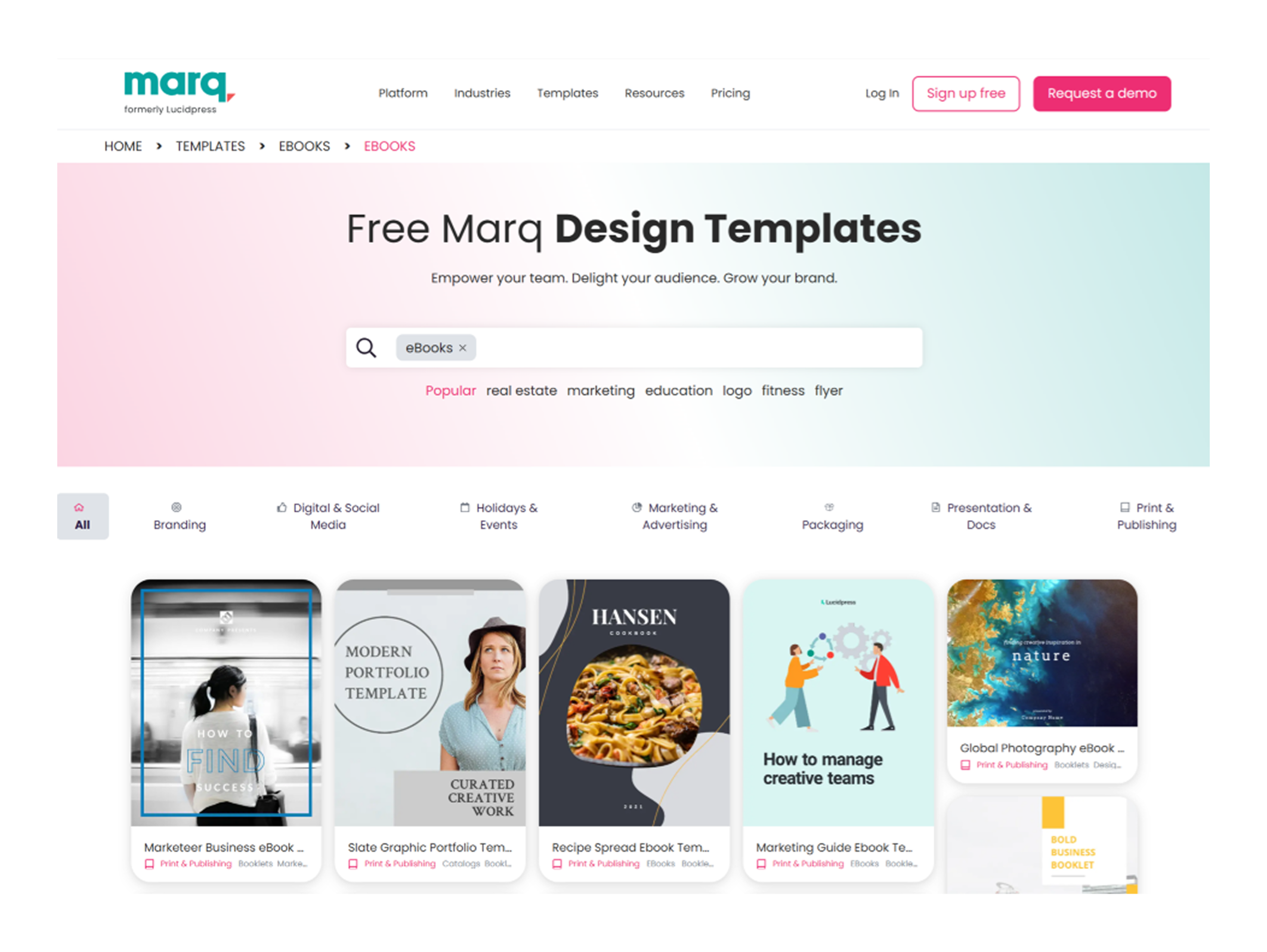
→ Venngage
Venngage is known for its infographic-first approach. It’s a strong choice if your ebook relies on data visualization or comparisons, such as charts, timelines, or icon-based layouts. The platform offers thousands of templates and is helpful when you need to translate content into something more visual and engaging.
✓ 3+ million stock photos and 40,000+ icons
✓ Real-time collaboration
✓ Around 60 free ebook templates
✓ Smart diagram features

→ Adobe InDesign
Adobe InDesign is the heavyweight option. It offers full control over layout, typography, and element placement. But it’s not built for beginners, and the learning curve is steep. Unless you already have design experience (or someone on your team does), it’s likely overkill for your first ebook project.
✓ 20,000+ fonts
✓ 1 million+ free photos, drawings, video clips, audio clips, and templates
✓ Ebook design resize feature
✓ 90+ free ebook templates
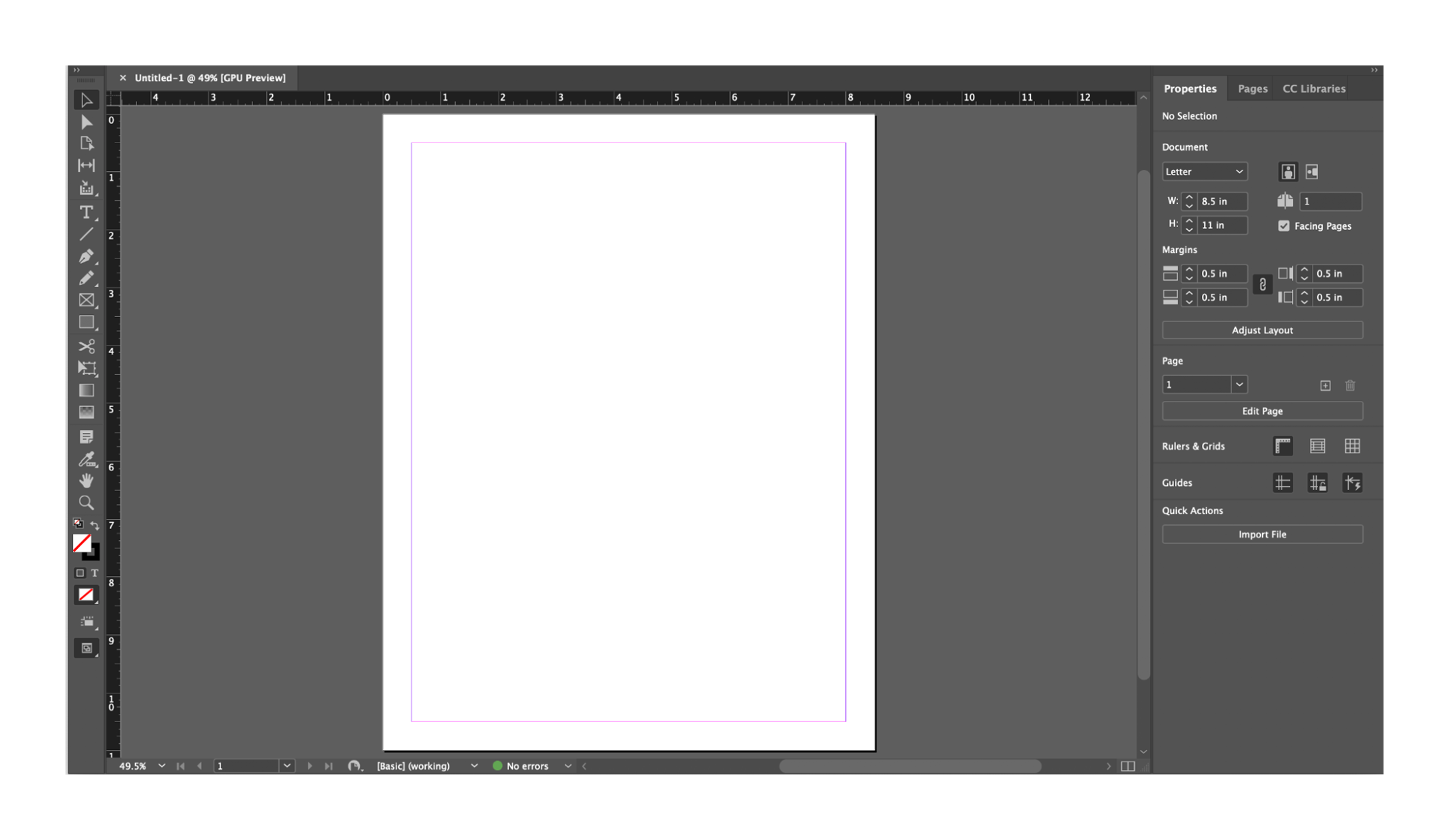
No matter which tool you choose, start with a template or existing design if possible. Using a structured template “saves time and ensures a professional look” for your ebook. You can then customize the branding elements. This way, even a non-designer can produce a polished layout without starting from a blank canvas.
If you simply want to keep things straightforward, you can create your ebook using tools you already know: Google Docs, Microsoft Word, or Notion. These platforms don’t offer advanced design options, but they’re more than enough to structure and deliver valuable content.
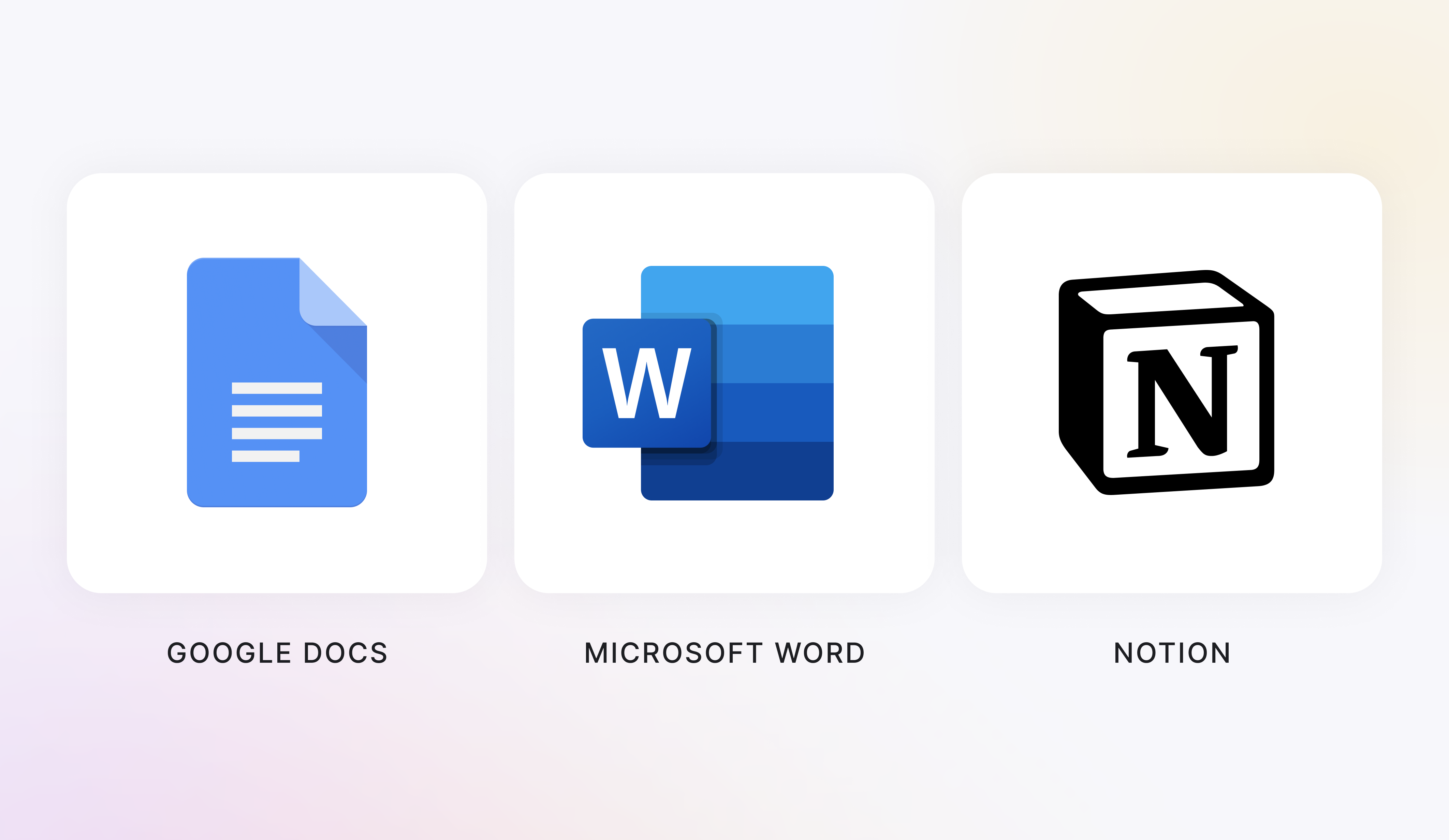
→ Google Docs
Google Docs is a favorite for collaborative writing. Here, you can apply basic styles, like headings, bullet lists, and quotes, to give the content structure. There are also downloadable templates that can help you start with a cleaner layout. Once you’re done writing, you can export your online document as a PDF file.
→ Microsoft Word
Microsoft Word works similarly and is still the go-to for many teams. It lets you apply heading styles, use tables and columns, and choose from built-in document templates. There is more layout flexibility than in Google Docs when it comes to controlling margins, line spacing, and page breaks.
→ Notion
Notion is a slightly different approach. If your team already uses it to write and organize content, you can repurpose that workflow to draft your own ebook. Pages in Notion can be exported directly as PDFs. The styling is minimal — mostly clean typography and spacing — but it’s consistent and functional.
This route won’t win any design awards, but that’s not the point. For many ebooks, focused on teaching or sharing insights, clarity often matters more than aesthetics. These tools help you create structured, readable content without needing to touch a single design element.
Sometimes, the best way to move fast is to hand things off, especially if ebook design isn’t your strength or priority.
If you already have the content written (or even loosely outlined), our TodayMade subscription gives you a straightforward path to a professional-looking ebook without getting stuck in tools or formatting decisions. The process is simple — you write the content, we handle the rest.
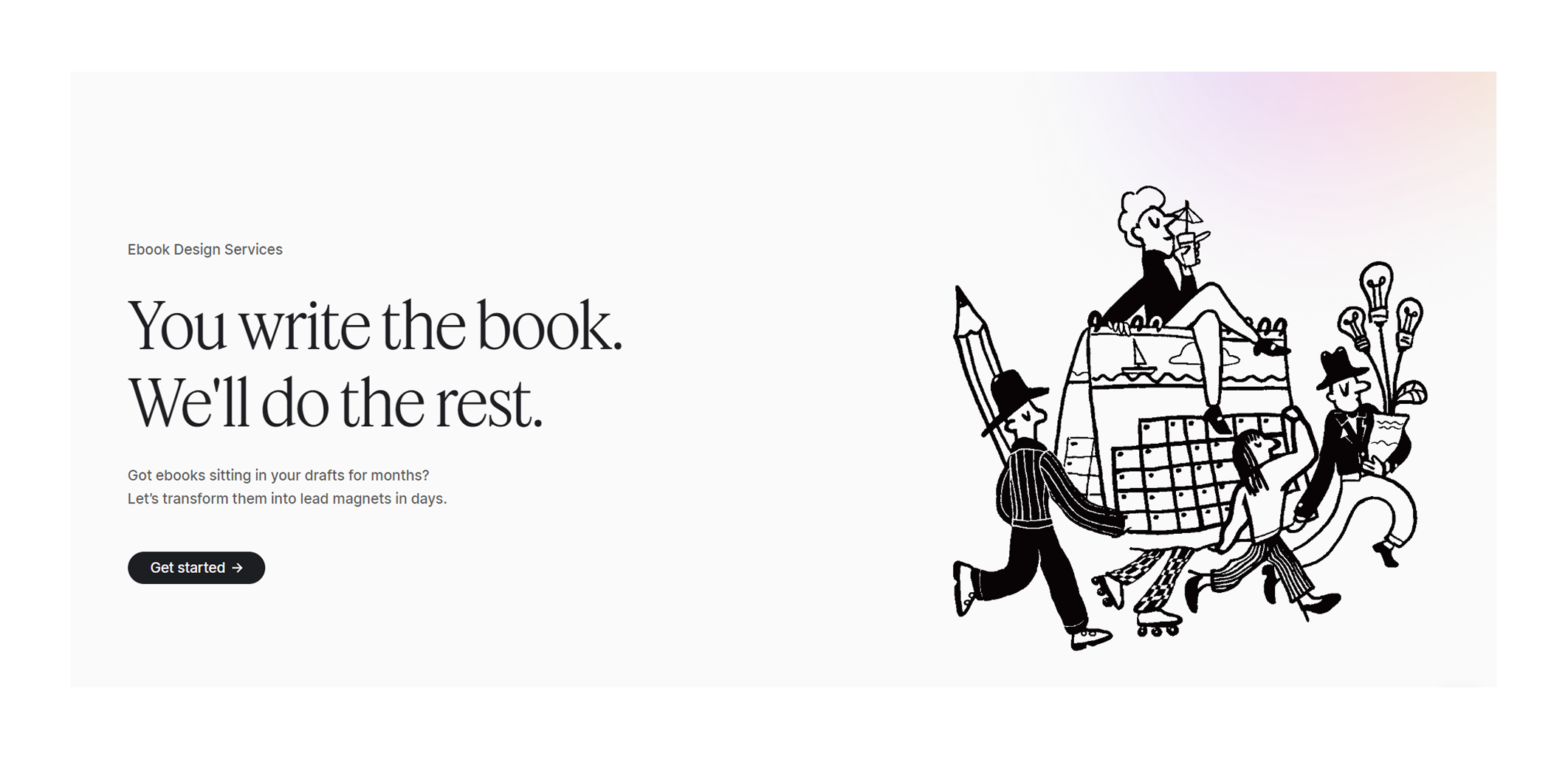
From our side, that means:
This approach works well for founders, marketing teams, and product companies that need to publish ebooks regularly but don’t want to stress out each time. Instead of spending hours learning how to make an ebook in Canva, you can focus on writing useful content and let our design team turn it into something effective.
That’s exactly how we worked with Eleken. Their team had a backlog of fully written ebooks that had been sitting untouched for nearly a year. What held them back was a lack of time and available design specialists. After partnering with us, they received on-brand designs for every book that, after publishing, became a steady source of inbound traffic.
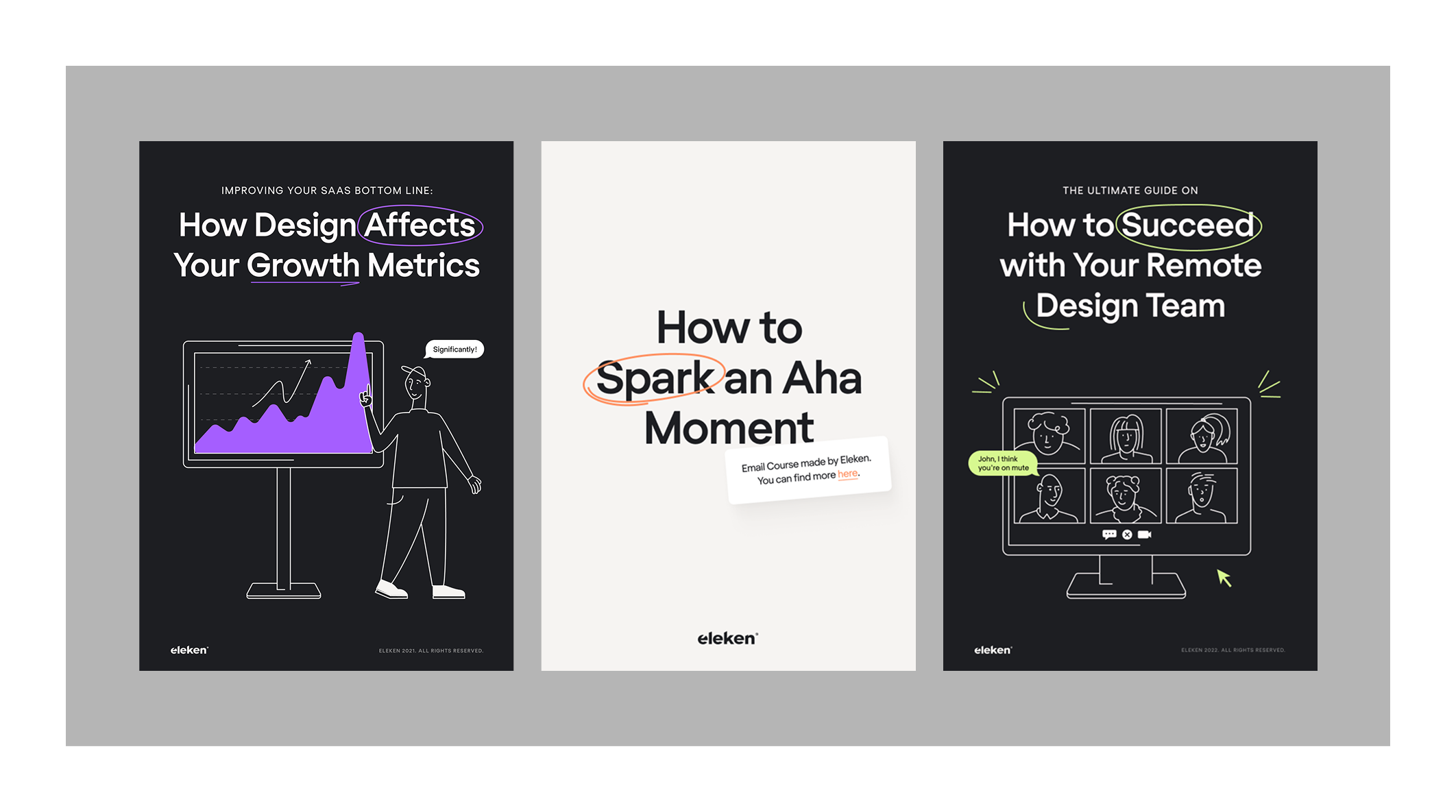
When your goal is speed, consistency, and brand-quality design, and you’ve already spent too much time trying to “just finish the damn ebook”, the same route will likely save you hours. So don’t overthink it. Book a demo and let’s finally get it done.
Most ebooks fail not because the content is weak, but because the design makes it hard to read. If you want digital content to feel professional and easy to absorb, focus less on creativity and more on the fundamentals.
Here are ten practical ebook tips that come straight from our own experience (and a few forum rants).
Start with a simple, structured layout. Add white space between paragraphs, around headings, and at the edges of each page. Avoid wall-of-text pages — use 3–4 sentence paragraphs and break them up with subheadings or bullet lists. A dense layout might save pages, but it kills retention.
Stick to two fonts: one for body text, one for headings. Sans-serif fonts are screen-friendly and easy to scan. To smoothly guide the reader, use font size (e.g., 14–16px for body) and weight (bold for headings). Keep heading sizes consistent across the ebook and never manually bold or enlarge text for style.
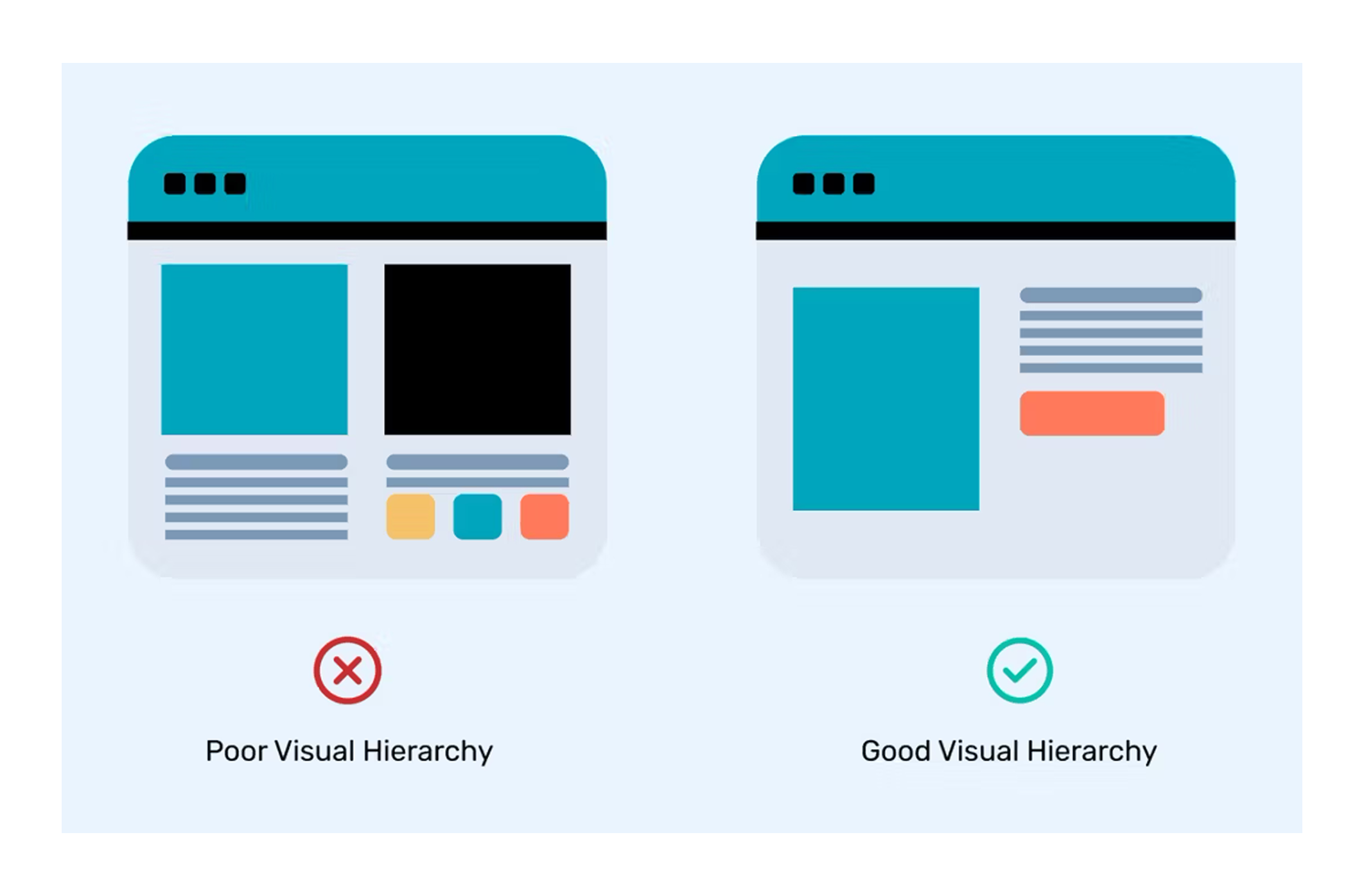
If you’re learning how to create a digital book, aim for at least 1.5× the font size for line spacing. Generous space between paragraphs and sections helps each idea stand on its own and makes the content easier to absorb. This might seem like a small detail, but it has a big impact on how your ebook feels.
Use no more than 2–3 brand-aligned colors, and apply them consistently across headings, text, and accents. When choosing combinations, pick colors that sit opposite each other on the color wheel and take time to review WCAG to make sure your design meets accessibility standards.
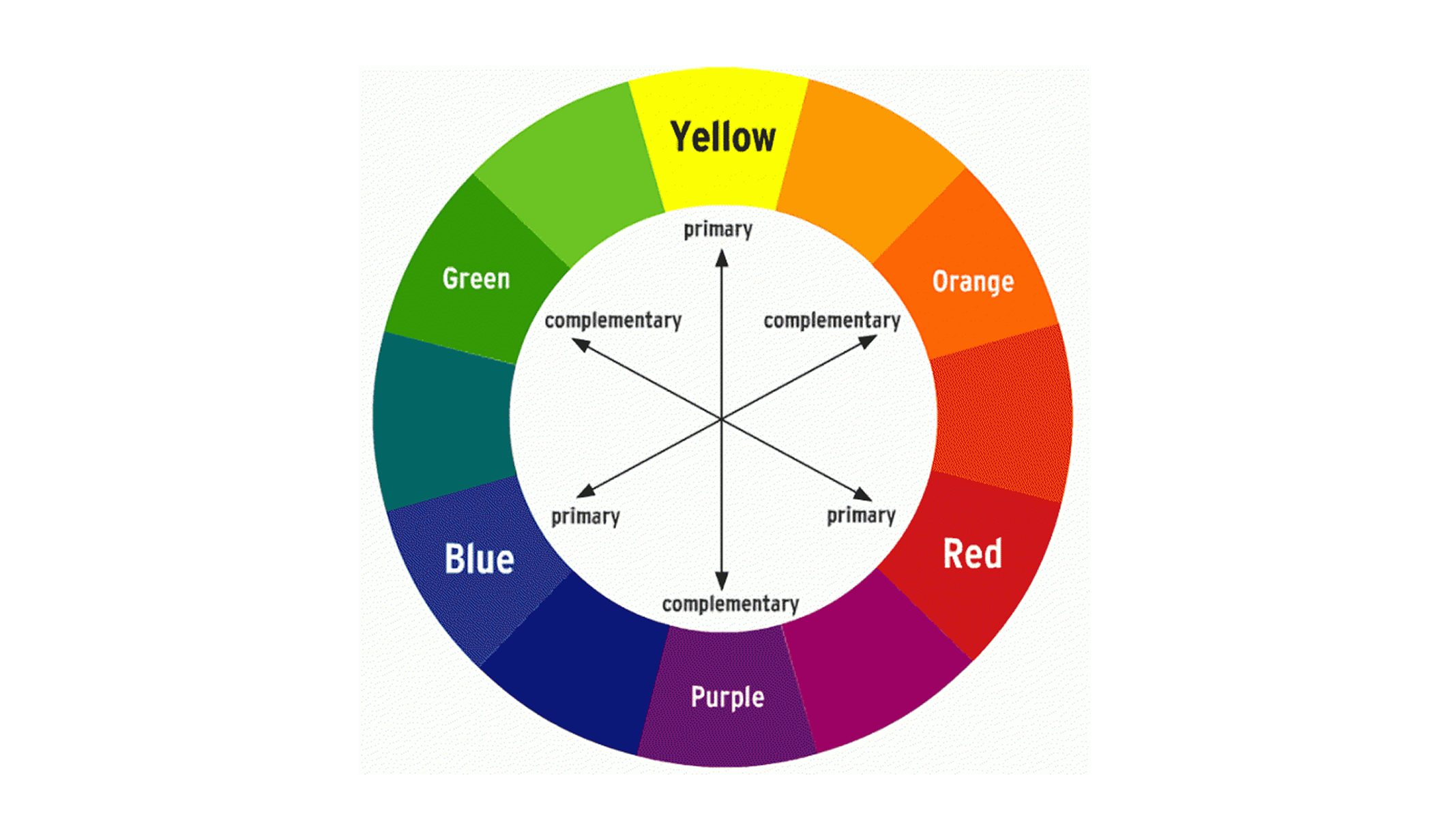
Think of visual content as part of your explanation. A well-placed chart or diagram can do more than a paragraph of text, but random stock photos add noise and dilute your message. Stick to images that reinforce the content, align them consistently, and add captions so readers always know why that visual is there.
If you’re exporting to a certain file type like PDF or EPUB, include a clickable table of contents. Link relevant sections or case studies directly in the body. You can even embed “Book a Demo” buttons or videos — just be sure to provide a fallback, like written URLs or your contact details, in case links break or someone prints the file.

Even if you read all the how to make ebooks guides out there, one thing often goes unsaid — most people will skim your ebook before they decide to read it. In this regard, use clear headings every 300–500 words, highlight key quotes in pull boxes, and apply bold text strategically to surface the most important ideas.
Your electronic book should feel like it came from the same team behind your own website, blog, or pitch deck. Use your existing brand fonts, tone of voice, and color palette and apply them consistently across headings, buttons, visuals, and the title page. A small logo on the ebook cover and a subtle footer are enough.

Prior to ebook publishing, check alignment, font size, image scaling, and spacing of your digital book on a laptop, tablet, and mobile devices. Better yet, hand it to someone who hasn’t seen it before. They’ll spot the tiny layout quirks and readability issues you’ve stopped noticing.
The cover is your main hook. Use a bold title, simple graphic design, and high contrast. Don’t clutter it with too much text. Treat it like a landing page header: quick, clear, and attention-grabbing. If your ebook shows up in a library of downloads or gets shared, the cover is what makes someone click.
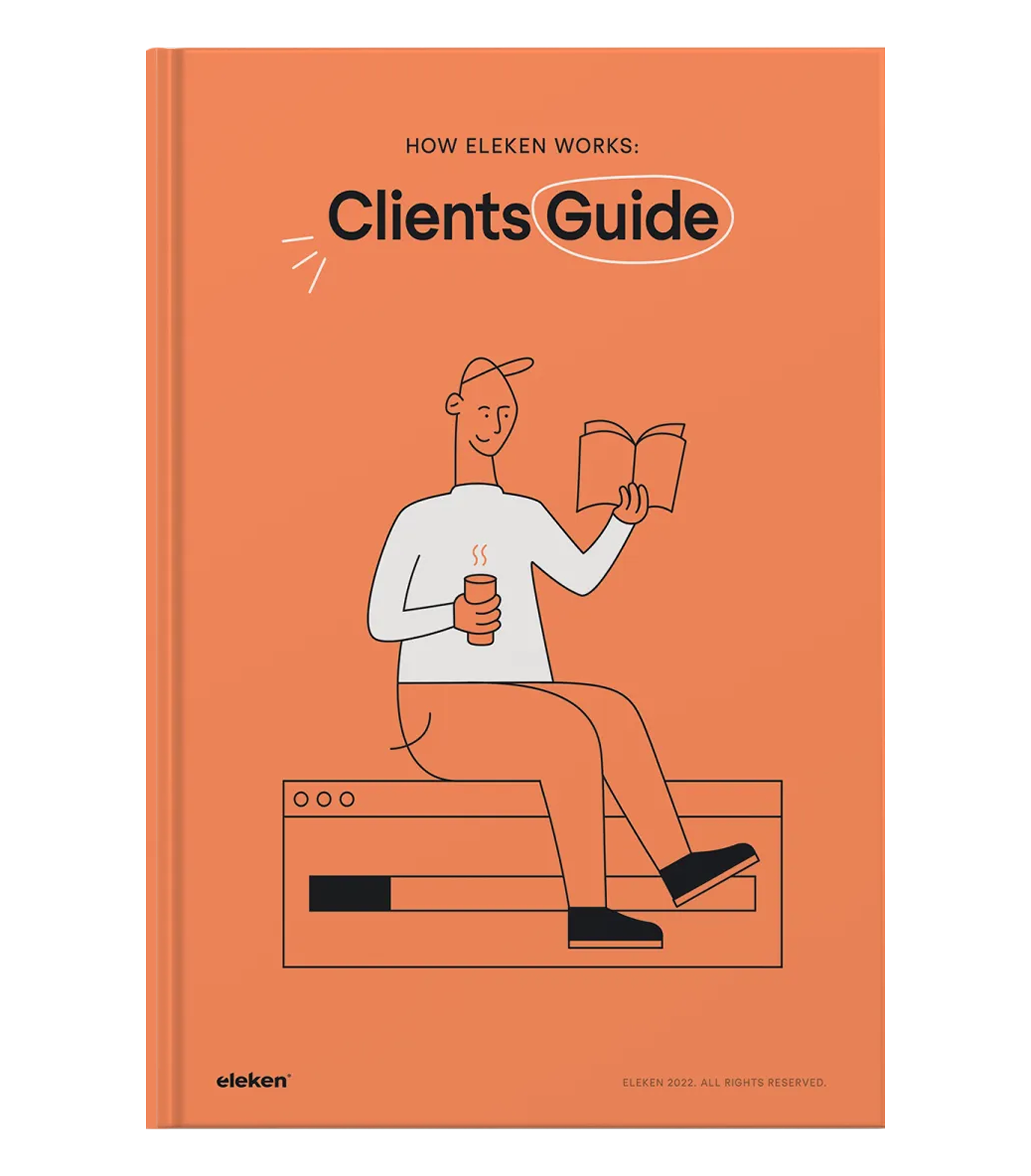
By this point, your ebook is written, designed, and nearly ready to launch. But before you hit that “publish” button, taking a few extra minutes to double-check the details can make a real difference. A quick pass through this list can help you catch formatting issues, broken links, or missing elements that quietly chip away at quality.
Here’s what to go over:
〇 Proofread for typos and broken links
〇 Review formatting across devices
〇 Check heading consistency
〇 Include a cover and author/company info
〇 Add your CTA and links
〇 Export to the correct format
〇 Test the download
〇 Double-check your file size
〇 Upload to your platform of choice
Only once you’ve ticked off every item can you be confident that your own ebook is truly ready to go live. Don’t rush this part, it’s often where the small but important fixes happen. Giving this list your full attention can reveal details you missed before and give your final product the polish it deserves.
Learning how to create a digital ebook may not feel like the most urgent task on your list. But once it’s done, it often becomes one of the most versatile tools in your marketing toolkit. Its content you can reshare, repurpose, quote, or build campaigns around for months. The key is to finish it, polish it, and get it out into the world.
If you’ve made it this far, you already have everything you need to do that. And whether you design it yourself, use professionally designed templates, or bring in support from our TodayMade team, the point is to make your work usable.
Done is better than “almost done.” Now’s the time to publish and see how ebooks sell in the market.


